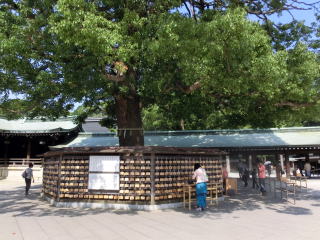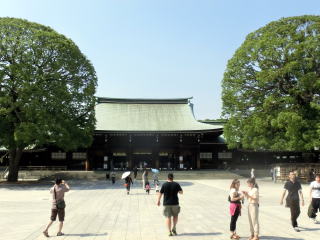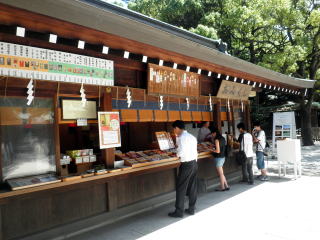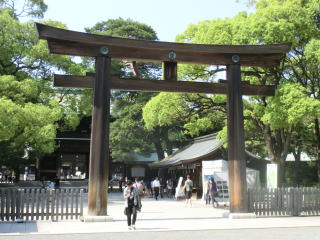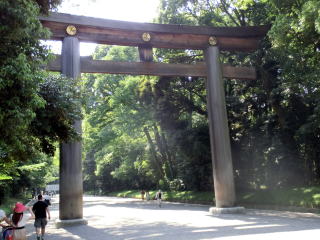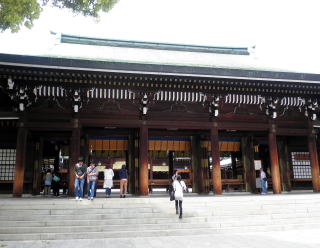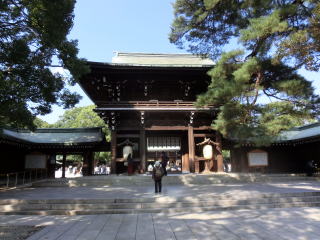MEIJI JINGU SHRINE

Meiji Shrine was built in 1920 by donation of people of Japan.
Its precinct has an area of 70ha with 180,000 trees in virgin forest and
is dedicated to
the Emperor Meiji (1852-1912) and his consort, Shoken (1849-1914).
He ascended the throne in Kyoto in 1867 and is great great grandfather
of the present emperor.
He and his followers achieved restoration of political power for the emperor,
called " Meiji Restoration " in 1868 and established an imperial
government with centralized administration in place of the then samurai
feudal regime which had lasted for about 264 years
since 1603. Afterwards he transfered the capital from Kyoto to Edo in 1869
for a rapid moderniza-
tion and militarization, renaming Edo Tokyo, which means eastern Kyoto.
Meiji Shrine is located a few minute walk from JR Harajuku station where we can reach
in 4 minutes from Shinjuku by JR Yamanote loop line.
We have a custom to visit a shrine and/or temple, and pray for happiness,
prosperity,
good health, etc. of new year during the new year vacations, and over 3
million
prayers visit Meiji shrine during the first 3 days of each year.
This is the inner gate to the sanctuary.
Passing through the inner gate we see the sanctuary
behind two saint camphor trees.
These vowing tablets are called EMA, which literally means
"picture of horse". In the ancient times rich people offered
a horse(s) to a shrine asking Shinto priest to pray for them.
However commoners could not afford to do it and offered
an tablet with a picture of horse, instead. These days EMA
offering becomes a common custom among us, Japanese.
Therefore we write our hope or desire on EMA and hang
them on at a shrine when we want to realize something.
As a result you can see tablets with a picture of horse
at many Shinto shrines and those with a picture of zodiac
animal or crest of shrine.at some shrines.
The visitors purify themselves with pure water
before entering the sanctuary.
The second gate and the access turns to left here.
These barrels of sake and wine are offerings
by Japanese and French brewers.
.
Maidens sell lucky charms.
The third gate.
EMA vowing tablets
The front of the sanctuary.
The front gate with three emperor's crests of
chrysanthemum above. We call this type of gate
TORII , which means "perch".




